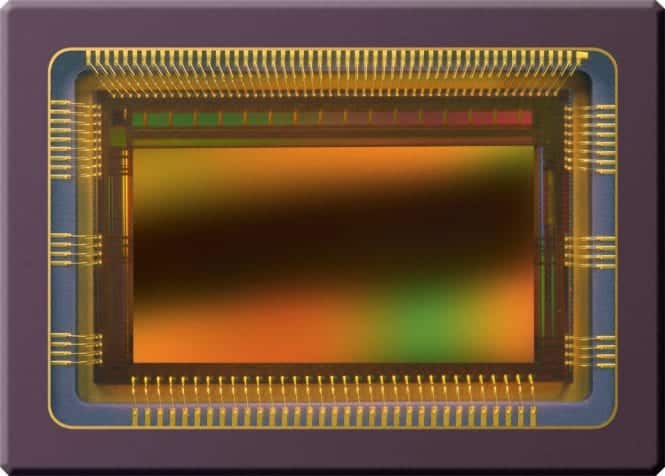The sensors have more impact on the images than you think. A CMOS image sensor is a type of image sensor technology within some digital cameras, consisting of an integrated circuit that records an image. You can think of the image sensor as a movie from an old movie camera.
The complementary metal-oxide-semiconductor (CMOS) sensor consists of millions of pixel sensors, each of which includes a photodetector. When light enters the camera through the lens, it hits the CMOS image sensor, causing each photodetector to accumulate an electrical charge based on the amount of light that hits it.
The digital camera then converts the charge into digital reading, which determines the intensity of the light measured on each photodetector, as well as the color. The software used to view the photos converts these readings into the individual pixels that make up the photo when viewed together.
What are image sensors?
All digital cameras have an image sensor that acquires information to create a photograph. There are two main types of image sensors – CMOS and CCD – and each has its advantages.
How does an image sensor work?
The easiest way to understand the image sensor is to think of it as the equivalent of a movie. When the shutter button of a digital camera is pressed, the light enters the camera. The image is displayed on the sensor in the same way as it would be displayed on a piece of film in a 35 mm film camera.
Digital camera sensors consist of pixels that collect photons (light energy packets) that are converted into an electric charge by the photodiode. In turn, this information is converted to a digital value by the analog-to-digital converter (ADC), allowing the camera to process the values in the final image.
DSLR cameras and point-and-shoot cameras primarily use two types of image sensors- CMOS and CCD.
What is a CCD image sensor?
The sensors of the charge-coupled device convert the pixel measurements in sequence using the circuits surrounding the sensor. CCDs use a single amplifier for all pixels.
CCDs are produced in companies with specialized equipment. This complexity is reflected in their often higher cost.
The advantages of a CCD sensor compared to a CMOS sensor are different:
- Less noise and generally higher quality images, especially in low light conditions
- Better color depth because the dynamic range of the sensor is often twice that of CMOS sensors
- Higher resolution and light sensitivity
What is a CMOS image sensor?
The complementary metal oxide semiconductor sensors simultaneously convert pixel measurements, using the circuits on the sensor itself. CMOS sensors use separate amplifiers for each pixel.
CMOS sensors are commonly used in DSLRs because they are faster and cheaper than CCD sensors. Both Nikon and Canon use CMOS sensors in their high-end DSLR cameras.
The CMOS sensor also has its advantages:
- Faster processing speed because active pixels and ADC are on the same chip
- Low energy consumption, up to 100 times less than a CCD
- Integrated camera functions such as automatic exposure, color coding and image compression directly on the chip
- Prevents “smearing” when an image is overexposed
- Less expensive production process
- The quality has greatly improved since their introduction
Array sensors of colored filters
An array of colored filters is mounted on the top of the sensor to capture red, green and blue components of light falling on the sensor. Therefore, each pixel is able to measure only one color. The other two colors are calculated by the sensor based on the surrounding pixels.
Although this approach may slightly affect image quality, it is almost imperceptible on current high-resolution cameras. Most current DSLRs use this technology.
Foveon sensors
Human eyes are sensitive to the three primary colors red, green and blue and other colors are processed by a combination of primary colors. In cinematographic photography, the different primary colors expose the corresponding chemical layer of the film.
Likewise, Foveon sensors have three sensor layers, each of which measures one of the primary colors. An image is produced by combining these three layers to produce a mosaic of square tiles. This is still a fairly new technology that is in use on some Sigma cameras.
CMOS vs. CCD
CMOS uses a slightly different technology than CCD, which is another type of image sensor found in digital cameras. More digital cameras use CMOS technology than CCD because CMOS image sensors consume less energy and can transmit data faster than CCD.
CMOS image sensors tend to cost a little more than the CCD.
At the beginning of digital cameras, the batteries were bigger because the cameras were bigger, and therefore the high energy consumption of the CCD was not a significant concern. But with the downsizing of digital cameras, which require smaller batteries, CMOS has become the best option.
And because image sensors have consistently seen the number of pixels they record increase, the ability of a CMOS image sensor to move data faster on the chip and other camera components than the CCD has become more valuable.
Advantages of CMOS
One area where CMOS really has an advantage over other image sensor technologies is in the activities it is able to perform on a chip, rather than sending the image sensor data to the firmware or camera software for certain activities of elaboration.
For example, a CMOS image sensor can perform noise reduction directly on the chip, saving time when moving data inside the camera.
The CMOS image sensor also performs analog to digital conversion processes on the chip, which CCD image sensors cannot perform. Some cameras will also perform auto-focus work on the CMOS image sensor, improving overall camera speed again.
Continuous improvements in CMOS
As camera manufacturers have migrated to CMOS technology, further research on the technology has been conducted, resulting in significant improvements.
For example, while CCD image sensors were less expensive than CMOS for production, further research focus on CMOS image sensors allowed the cost of CMOS to continue to fall.
One area in which this emphasis on research has benefited CMOS is low light technology. CMOS image sensors continue to show improvements in their ability to record images with decent results in low light photography.
The noise reduction capabilities of CMOS technology have steadily increased in recent years, further improving the CMOS image sensor’s ability to function well in low light conditions.
Another recent improvement in CMOS was the introduction of back-illuminated image sensor technology, in which the wires moving data from the image sensor to the camera were moved from the front of the image sensor, where they block part of the light that it hits the sensor, making the CMOS image sensor work better in low light conditions, maintaining the chip’s ability to move data at high speed compared to CCD image sensors.

